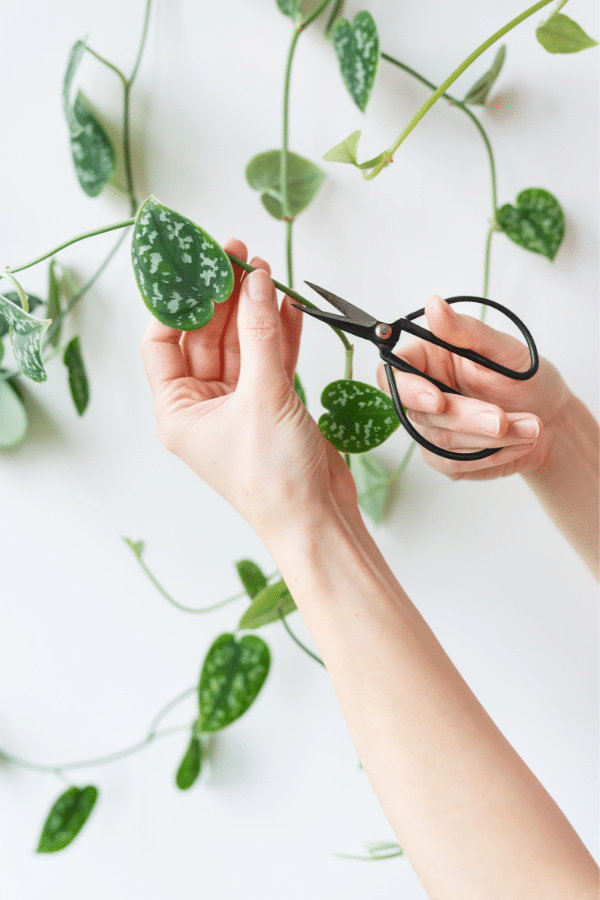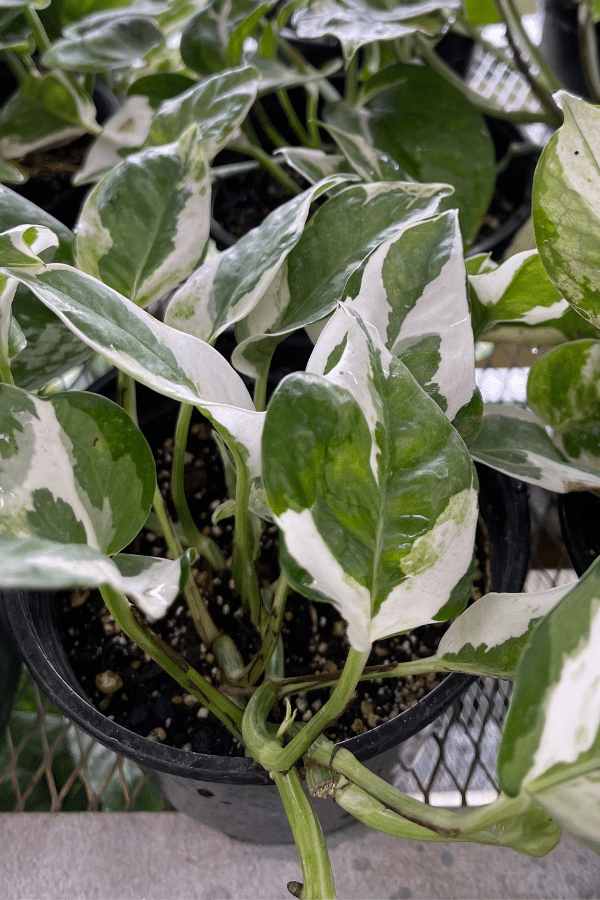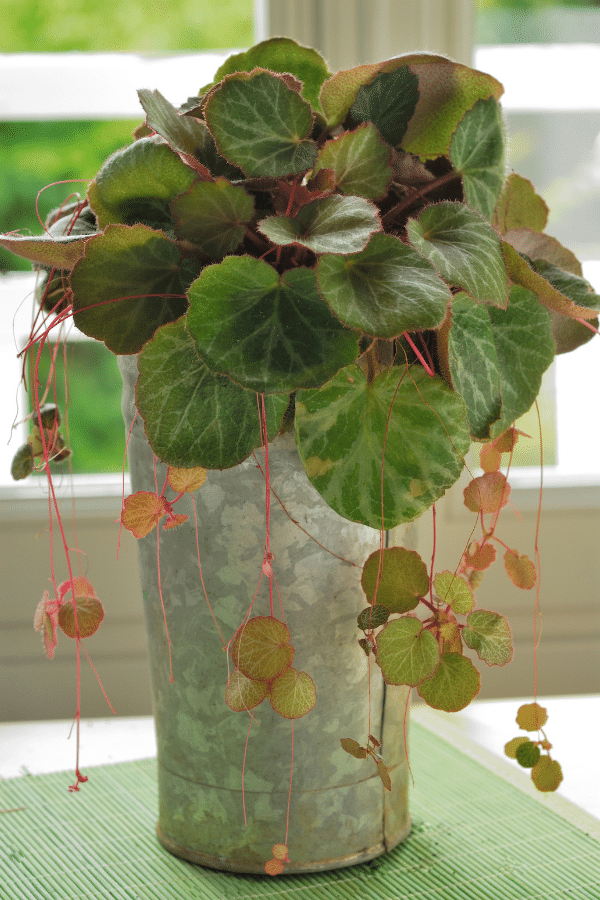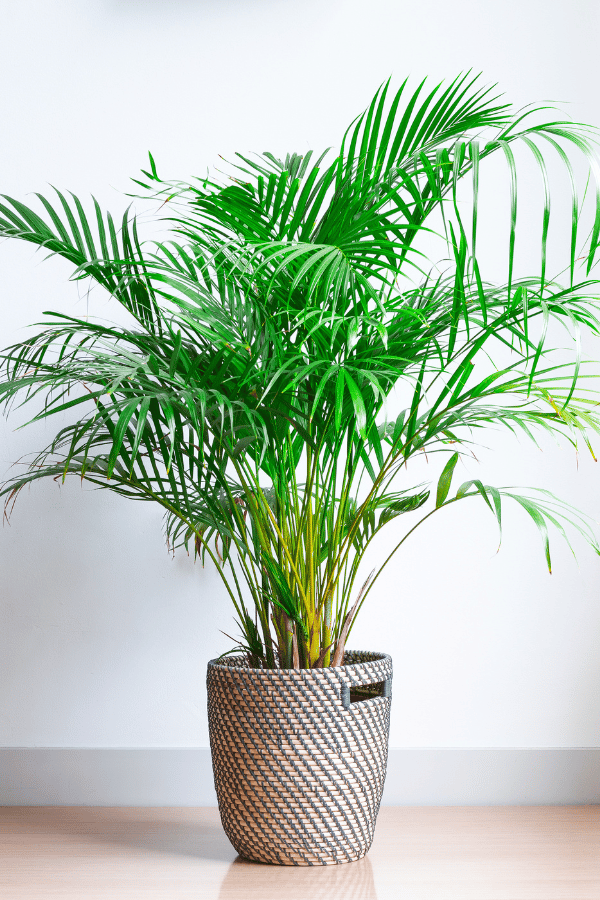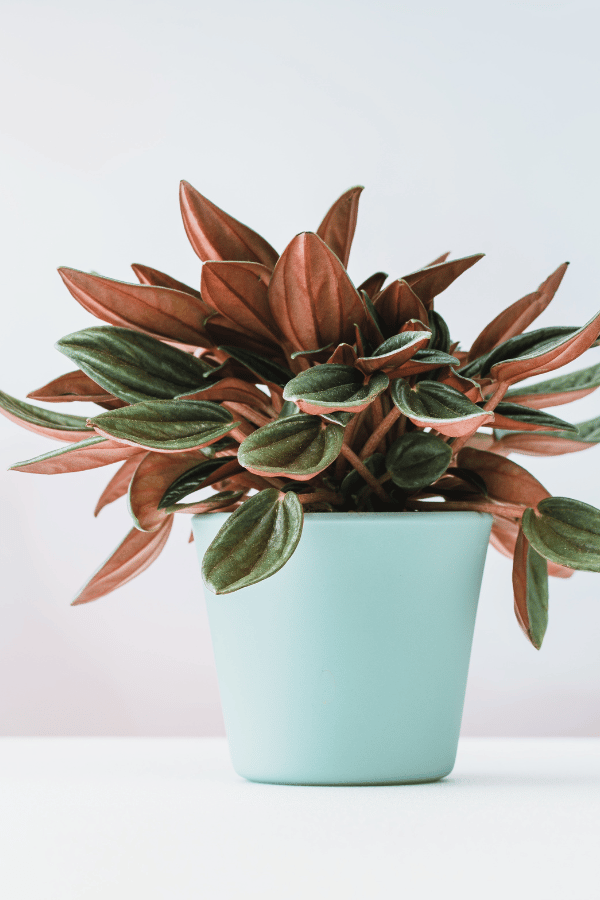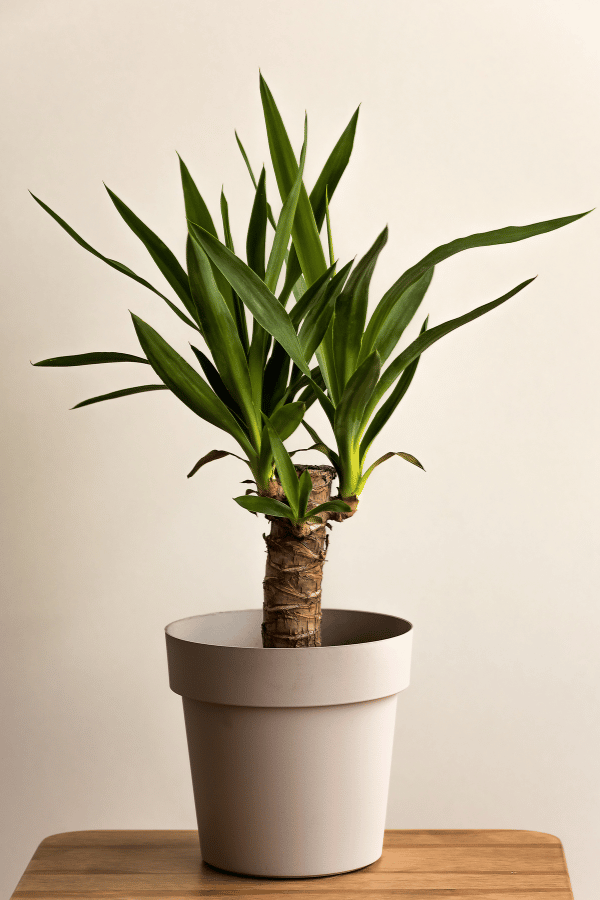Raven ZZ Plant
Scientific Name: Raven ZZ Plant
Raven ZZ Plant care is an easy plant to grow and care for, much like the original ZZ Plant. If you are a lover of the ZZ Plant but want a different version, then a Raven ZZ Plant is perfect for you.
To give this Raven ZZ plant the best care, it requires well-draining soil, water when the soil is dry, provide it with bright indirect sunlight, temperatures ranging from 68-78F, and average humidity levels.
Quick Care Overview
| Common Name | Raven ZZ Plant |
| Scientific Name | Raven ZZ Plant |
| Family | Araceae |
| Origin | South Korea |
| Growth Rate | Fast |
| Identification | Purple to black mature leaves |
| Height | Up to 3 feet tall |
| Soil | Well-draining soil |
| Water | Water when the soil is dry |
| Temperature | 68-78F |
| Sunlight | Bright indirect sunlight |
| Toxic to Cats & Dogs | Yes |
| Toxic to Humans | Yes |
| Pests | Fungus gnats |
| Diseases | Root rot |
Below we will dive deep into this Raven ZZ Plant care guide.
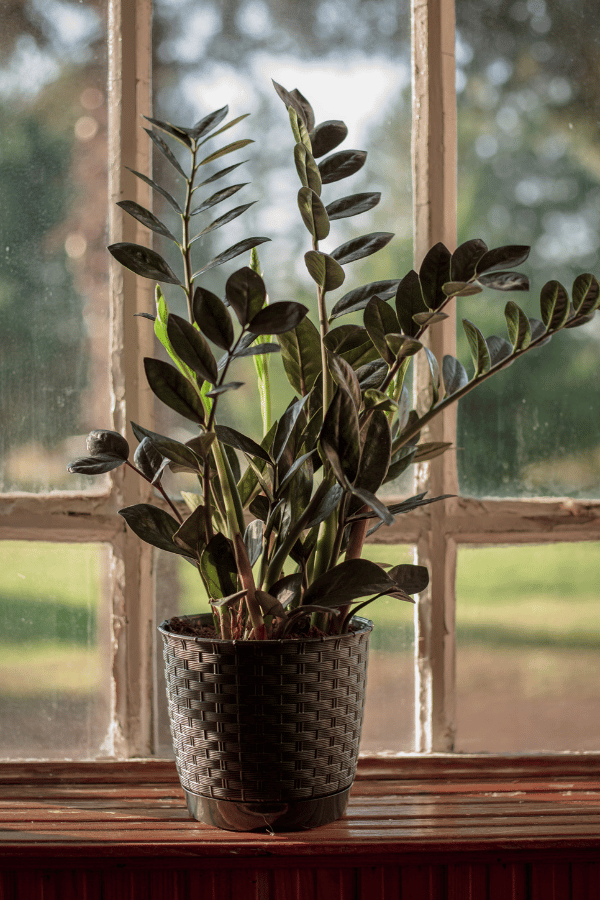
Raven ZZ Plant History
Originating in South Korea in 2006, Raven ZZ (Zamioculcas Zamiifolia) is a patented black ZZ plant that first appeared as a natural mutation from a ZZ plant owned by a nursery owner named Hyuk Jin Lee. Rare houseplant collectors and interior designers adore this dark-colored variety. Its purple-black foliage makes a bold statement. Due to its popularity, this succulent can now be commonly found in garden centers. This hardy plant is also very low-maintenance, making it a perfect choice for all houseplant collectors, beginning and seasoned.
Raven ZZ Plant Identification
Raven ZZ has bright, lime green new growth that will turn to a deep purple-black color with maturity. Its fleshy leaves and thick petioles store water, making it able to withstand some drought periods.
Raven ZZ Plant Moonlight Growth Facts
The Raven ZZ plant will go through fast-growing spurts and will go through a period of dormancy. It will take a couple of years for this plant to reach maturity.
How Big Does a Raven ZZ Plant Get?
The Raven ZZ plant will grow to 3 feet tall with a 3 foot spread.
Raven ZZ Plant Care
ZZ plants are extremely easy to care for, making them perfect for beginning gardeners. In addition, these plants are tough to kill and can handle low light conditions, inconsistent watering, and very rarely have issues with diseases or pests.
Raven ZZ Plant Soil
As ZZ plants are so hardy, they do not require any particular potting mixes, as long as it has a decent water drainage capacity. A good combination for your ZZ plant is quality commercial potting soil with incorporations of perlite or vermiculite.
Raven ZZ Plant Fertilizer
While the Raven plant is not considered a heavy feeder, it will benefit from a feeding every few months from a diluted, balanced, liquid fertilizer indicated for houseplants. Do not overfeed, and do not feed your plant in winter.
Raven ZZ Plant Watering
The Raven ZZ plant is quite drought-resistant and should only be watered after the soil has completely dried out. However, this plant is quite susceptible to overwatering, so ensure you do not overwater. Depending on growing conditions, you will likely need to water your plant around every two weeks in the warm growing season and once monthly during winter.
Raven ZZ Plant Light Requirements
The Raven ZZ plant is known for its ability to thrive in low-light conditions. This plant can survive in windowless rooms, although it will grow better in bright, indirect light. A southern-facing window will be perfect for this plant. However, avoid intense, direct sunlight, as this may cause foliage to scorch.
Raven ZZ Plant Temperature & Humidity
Your Raven ZZ will be happiest if kept in warm environments, above 60 degrees, with being kept between 68-78 degrees Fahrenheit being ideal. Never allow your ZZ plant to be exposed to temperatures below 40 degrees Fahrenheit; this will lead to permanent damage. Additionally, this plant is a bit sensitive to large fluctuations in temperature. Therefore, ensure that you do not place this plant near AC units, heaters, vents, or drafts. Additionally, Raven ZZ does not have any specific humidity requirements.
Repotting Raven ZZ Plant
You should repot your Raven ZZ plant around every 2-3 years to ensure that it has ample room to grow. However, you may reduce the growth of your plant by halting repotting. Instead, simply divide your plant in spring if it becomes too large for its pot and repot in the same container, ensuring you refresh the soil.
Raven ZZ Plant Maintenance & Pruning
You may periodically prune back your Raven ZZ plant by pruning branches at the base using sharp, clean pruning shears. It is advisable to wear gloves while pruning, as the sap of this plant may cause contact dermatitis.
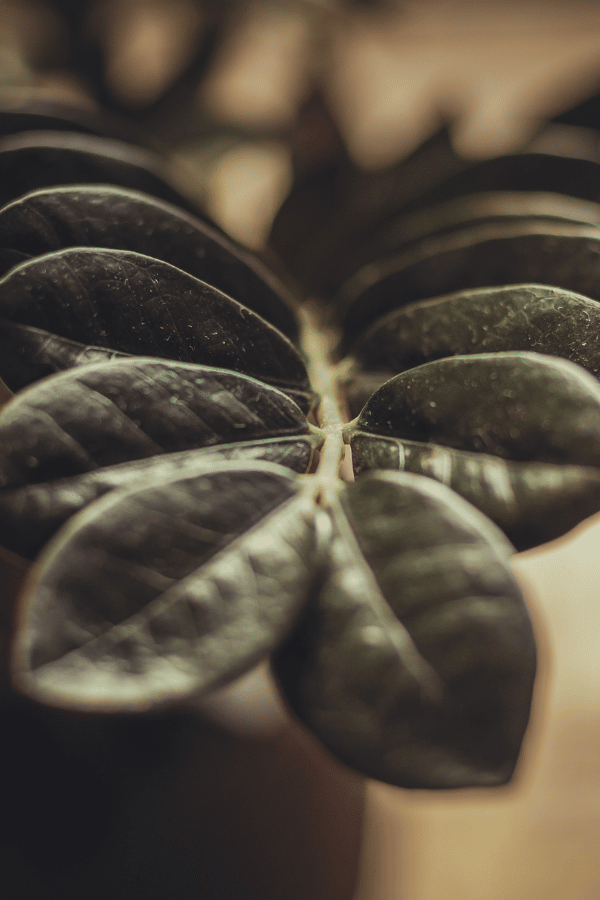
Raven ZZ Plant Propagation
It is essential to keep in mind that since Raven ZZ is patented, it is illegal to sell any plants that you may propagate. However, this ZZ plant is straightforward to propagate. You may propagate through division stem cuttings or leaf cuttings. Division is by far the quickest method of propagation. To propagate through division, during repotting, simply divide the rhizomatous tuber using a sharp, clean blade, ensuring that each section has its own set of roots and shoots. Next, pot the tuber sections into their own container with fresh soil, tamp lightly, water thoroughly, and place in indirect light.
Raven ZZ Plant Toxicity
Toxicity to Humans
Due to this plant’s calcium oxalate crystal content, it is considered toxic to humans and should not be ingested. Additionally, it is suggested to wear gloves when handling this plant.
Toxicity to Cats & Dogs
Unfortunately, the Raven ZZ plant is considered toxic to pets. Keep this plant away from your cat and dog and call your veterinarian if you suspect your pet has gotten to it.
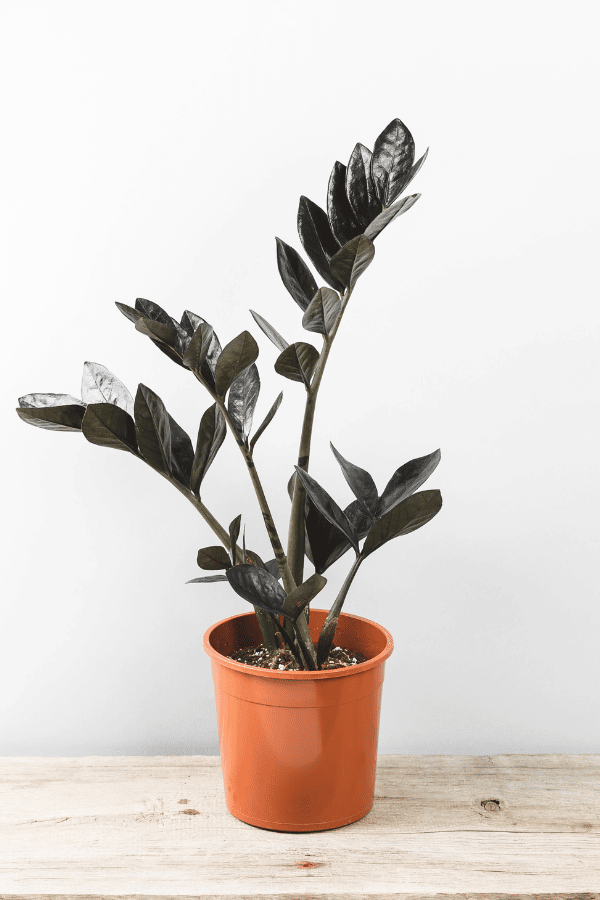
Raven ZZ Plant Problems
Raven ZZ Plant Leaves Turning Yellow
If the foliage of your ZZ plant turns yellow, this indicates that the plant is under stress. This may be due to temperature fluctuations, nutritional deficiency, lack of water, or other issues such as pests or disease.
Raven ZZ Plant Leaves Turning Brown
The foliage of your ZZ plant may turn brown due to overwatering or too much direct sunlight.
Raven ZZ Plant Diseases
While the Raven ZZ plant is generally considered disease-resistant, it still may suffer from issues, likely due to overwatering.
Raven ZZ Plant Pests
Although the Raven ZZ plant is not particularly susceptible to infestation from pests, it still may experience issues. Periodically inspect your plants for signs of infestation.

